#maly delschaft
Text

Maly Delschaft on a vintage postcard
#postkaart#delschaft#carte postale#postcard#historic#postkarte#postal#tarjeta#sepia#photo#ansichtskarte#briefkaart#old#vintage#maly delschaft#maly#photography#ephemera
3 notes
·
View notes
Text

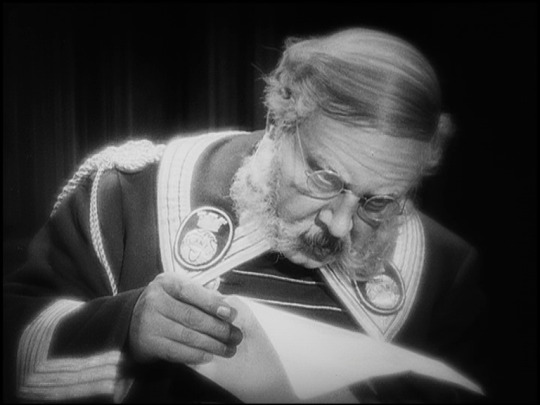


youtube
The Last Laugh (1924)
My rating: 6/10
Ganz schön viel Drama um einen Mantel, auch wenn er sehr hübsch ist.
That's a lot of drama about a coat, even if it's very pretty.
1 note
·
View note
Text

Emil Jannings in The Last Laugh (F.W. Murnau, 1924)
Cast: Emil Jannings, Maly Delschaft, Max Hiller, Emilie Kurz, Hans Unterkircher, George John. Screenplay: Carl Mayer. Cinematography: Karl Freund. Production design: Edgar G. Ulmer. Film editing: Elfi Böttrich.
F.W. Murnau's landmark film The Last Laugh tells a simple story: An elderly, preening doorman (Emil Jannings) at a luxury hotel struggles to unload a large trunk one rainy evening, and the hotel manager (Hans Unterkircher) takes notice. The doorman goes home to his apartment building where he's greeted with the usual deference accorded to his regal bearing and his brass-buttoned uniform. But when he returns to work the next day he finds a new doorman wearing a copy of the uniform. The hotel manager tells him that he's been replaced, and to turn in the uniform and report to his new job: lavatory attendant. Appalled and crushed, he swipes his old uniform and goes home that night wearing it as if nothing has happened. His niece (Maly Delschaft) is being married. and the ex-doorman celebrates well into the night. Still tipsy the next day, he goes back to the hotel and his new job, stashing the uniform in a checkroom at the railroad station. He bumbles through his duties, but when he returns home he's mocked by his neighbors, who have discovered his fall from grace. The next day he's even more disenchanted with his new job, and incurs the anger of a patron who reports him to the hotel manager, who reprimands him. That night he stays in the washroom, where he's found by the night watchman (Georg John), who helps him retrieve the old uniform and return it to storage. Exhausted, he falls asleep in his chair, and the night watchman tenderly covers him with his coat. And that's where the one and only intertitle occurs: It proclaims that this is where the story would most likely end in reality, with the lavatory attendant living out the rest of his days with "little to look forward to but death." But instead, "The author took pity on him ... and provided quite an improbable epilogue." In short, the protagonist inherits a fortune and invites the night watchman to join him as they're wined and dined by the hotel. It's an audacious ending to a remarkably innovative film. The innovations have received most of the attention, especially Karl Freund's camerawork, which involved far more movement than was usual for the day, with Freund sometimes mounting the camera on a wheelchair or strapping it to his body and riding a bicycle through the sets. The doorman's drunkenness is simulated with a subjective camera, double-exposures, and focus changes. The absence of intertitles is also striking, with no loss of narrative coherence and only a little uncertainty about who some of the characters are: I wasn't sure about the identity of the bride until I saw her listed as his niece in the credits on IMDb. But it's the provision of an alternate ending that strikes me as most audacious. The English title, The Last Laugh, seems to derive from this "improbable epilogue." (The German title, Der letzte Mann, means "the last man.") Does the last laugh really belong to Murnau and scenarist Carl Mayer, mocking the audience's sentimentality in wanting an unearned happy ending?
0 notes
Photo

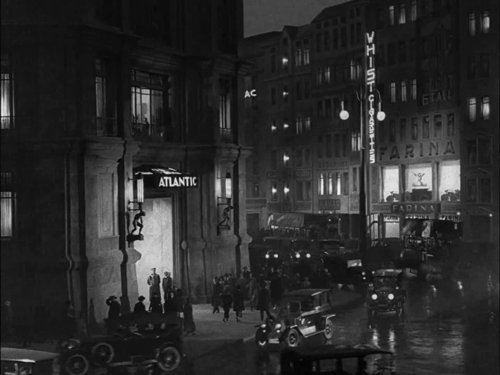

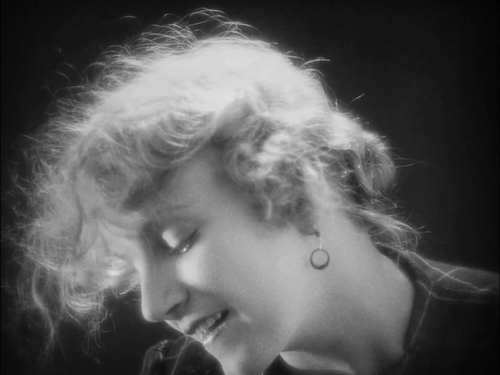
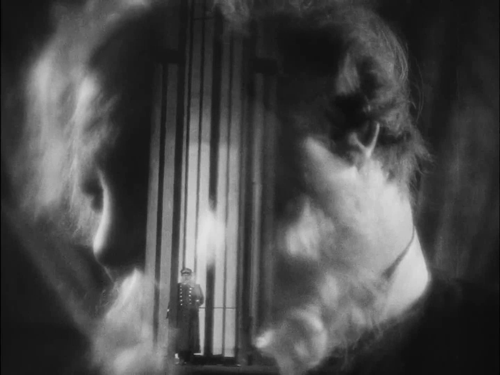


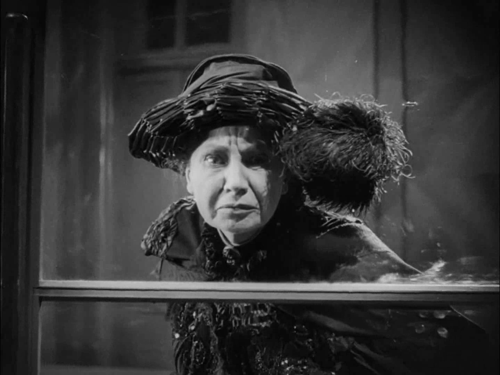

Der letzte Mann (F.W. Murnau, 1924)
#Der letzte Mann#f.w. murnau#gif#murnau#silent film#1924#the last laugh#black and white#Emil Jannings#Maly Delschaft#Emilie Kurz#hands#faces
267 notes
·
View notes
Text
#variete#film#review#criterion channel#german expressionism#e.a. dupont#emil jannings#lya de putti#warwick ward#maly delschaft
1 note
·
View note
Photo

Films Watched in 2018:
73. Der letzte Mann/The Last Laugh (1924) - Dir. F.W. Murnau
#Der letzte Mann#The Last Laugh#F.W. Murnau#Emil Jannings#Maly Delschaft#Max Hiller#Hans Unterkircher#Silent Cinema#German Expressionism#Films Watched in 2018#My Post
3 notes
·
View notes
Photo

Lya de Putti als hervorragende Luft-Akrobatin im Varieté. Bloß der Jannings ist immer so eifersüchtig! Immer wieder gerne verwendete Motive, Karl Freund an der entfesselten Kamera, und die Tiger Lillies. So werden wir keinesfalls der Unmoral anheimfallen.
#Varieté#Lya de Putti#Emil Jannings#Warwick Ward#Maly Delschaft#Kurt Gerron#Film gesehen#E. A. Dupont#The Tiger Lillies
0 notes
Photo

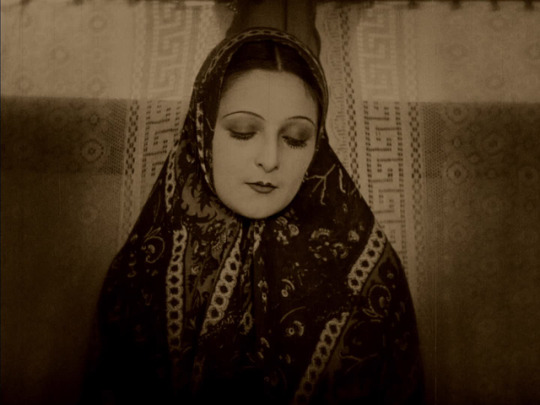

Varieté | Ewald André Dupont | 1925
Emil Jannings, Lya De Putti, Maly Delschaft
15 notes
·
View notes
Photo

Vitold Polonsky and Lidya Ryndina
Russian postcard, no. 174. Collection Didier Hanson.
Vitold Polonsky (1879-1919) was one of the most popular actors in pre-Revolutionary Russian cinema.
Russian actress and author Lidya Ryndina (1884-1957) was with Vera Kholodnaya, and Vera Karalli one of the major film divas of the silent cinema of the Russian Empire. Flying the revolution, she moved to Germany where she also made a few silent films during the 1920s.
Lidiya Dmitrievna Ryndina (or Lidiya T. Ryndina according to IMDb ) was born in 1884. She was a daughter of a Russian General. Ryndina started her career as a stage actress in Kiev. Ryndina started her career as a stage actress in Kiev. She later performed at the Alexandrinsky Theatre in Saint Petersburg, and the Korsh Theatre and the Nezlobin Theatre in Moscow. In 1913, she started to appear in films for producer Iosif N. Ermoliev. She became known with roles in such silent Russian films as Peterburgskiye trushchobi/The Lower Depths of St. Petersburg (Pyotr Chardynin, Vladimir Gardin, Yakov Protazanov, 1915) with Vladimir Maksimov and Ivan Mozzhukhin, and Nikolay Stavrogin (Yakov Protazanov, 1915) with Ivan Mozzhukhin and Nathalie Lissenko. The latter was based on Fyodor Dostoevsky’s story Devils. She worked several times with the most important filmmaker of the early Russian cinema, Yevgeni Bauer. Their films include Lulia Bek (Yevgeni Bauer, 1914), Vozmezdie (Yevgeni Bauer, 1916) with Vitold Polonsky and Vera Karalli, and Lozh (Yevgeni Bauer, 1916). She also co-starred with Vladimir Strizhevsky in Zhizn trekh dney/A life of three days (Gromov, 1917).
Lidiya Ryndina left Russia because after the Russian Revolution. In fact in 1917, there was a pair of revolutions in Russia in 1917 which dismantled the Tsarist autocracy and led to the rise of the Soviet Union. In 1919, Ryndina first went to the Krim, then to Constantinople and from there to Western Europe. In Austria, and later in Germany, she was able to appear in few films during the 1920s. In 1922, she appeared in Der Unbekannte aus Russland/The Unknown from Russia (Hans Otto, 1922), based on a script by Béla Balázs. She also appeared in a supporting part in Der Mann auf dem Kometen/The Man on the Comet (Alfred Halm, 1925) with Luciano Albertini and Maly Delschaft. After the war, she moved to Paris, where she played in Henrik Ibsen’s play Ghosts. Lidya Ryndina passed away in Paris in 1957. She was married twice, first to a man called Brylkin and later to the Russian poet and publisher Sergey Alexeevich Sokolov-Krechetov.
Source: Čiurlionis, Find A Grave, Ciné-Phil-Azr (French), Wikipedia (Russian) and IMDb.
6 notes
·
View notes
Text
Variety (1925)
EWALD ANDRE DUPONT
Bil’s rating (out of 5): BBB.5.
Original Title: Varieté
Germany, 1925. Universum Film. Screenplay by Ewald André Dupont, based on the novel by Felix Hollaender. Cinematography by Karl Freund, Carl Hoffmann. Produced by Erich Pommer. Music by Stephen Horne, Erno Rapee. Production Design by Alfred Junge, Oscar Friedrich Werndorff.
[youtube=https://www.youtube.com/watch…
View On WordPress
#Alex Hyde and his Original New York Jazz Orchestra#Alfred Junge#Alice Hechy#Carl Hoffmann#Charles Lincoln#Emil Jannings#Enrico Rastelli#Erich Pommer#Erno Rapee#Ewald André Dupont#Felix Hollaender#Georg Baselt#Georg John#Germany#Karl Freund#Kurt Gerron#Lya De Putti#Maly Delschaft#Oscar Friedrich Werndorff#Paul Rehkopf#Stephen Horne#The Flying Codonas#Trude Hesterberg#Universum Film#Warwick Ward#Werner Krauss
0 notes
Photo

AGOSTO 20, 1995
MUERE LA ACTRIZ ALEMANA MALY DELSCHAFT
Varieté
Dir. Ewald André Dupont
Alemania
1925
#varieté#ewald andré dupont#emil jannings#maly delschaft#cine alemán#cine 1920#DíasDeCine#DíasDeCine2017#VeoCineDiario
0 notes
Photo

Der letzte Mann (1924) · F. W. Murnau
0 notes
Photo


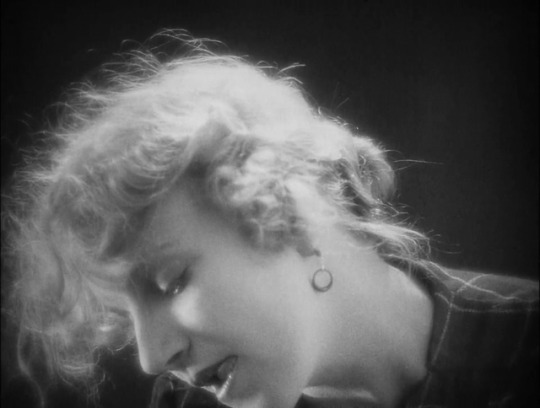

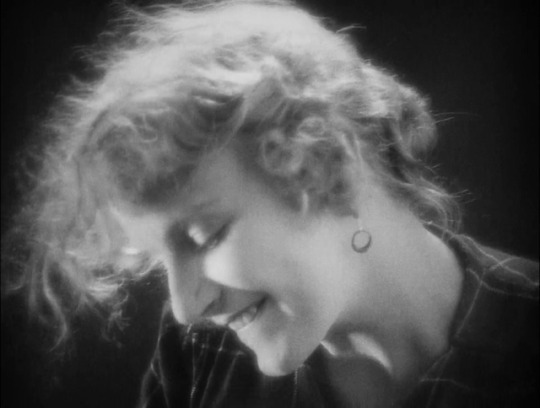
Der letzte Mann (F.W. Murnau, 1924)
#Der letzte Mann#the last laugh#faces#beauty#food#cake#smile#murnau#silent film#black and white#1924#f.w. murnau#Maly Delschaft
108 notes
·
View notes
Text
The Last Laugh


The Last Laugh (German: Der letzte Mann (The Last Man)) is a 1924 German silent film directed by German director F. W. Murnau from a screenplay written by Carl Mayer. The film stars Emil Jannings and Maly Delschaft. In German, the title means, “The last man.”
Stephen Brockmann summarized the film’s plot as, “a nameless hotel doorman loses his job”.[1] It is a cinematic example of the Kammerspiel…
View On WordPress
#Apple#art#Arts#Audio#blogging#Boating#books#Business#Cats#Coding#computer#dogs#faith#family#feedback#Frogs#Fun#google#guides#health#Home#Ideas#Learning#life#Me#media#movies#music#news#poetry
0 notes
Video
<strong>Iris Arlan <a href="https://www.flickr.com/photos/truusbobjantoo/">by Truus, Bob & Jan too!</a></strong> <br /><i>Via Flickr:</i> <br />Austrian postcard by Iris Verlag, no. 5678. Photo: Angelo.
Beautiful actress Iris Arlan (? - ?) worked for Max Reinhardt’s theatre and appeared in several German and Austrian silent films. Around 1936, after roles in a handful of sound films, she disappeared into oblivion.
Very little is known about Iris Arlan, who was sometimes credited as Iris Aslan. We could not find any information about where or when she was born. IMDb indicates that she began her film career in 1927 in the film Die Lindenwirtin am Rhein/The Linden Hostess on the Rhine (1927, Rolf Randolf) with Maly Delschaft and Gerd Briese. That same year she also appeared in supporting parts in Die weiße Spinne/The White Spider (1927, Carl Boese) starring Maria Paudler and Orientexpress/Orient Express (1927, Wilhelm Thiele) with Lil Dagover. These films were all produced by Phoebus-Film AG, a German company that had produced and distributed films since 1914. Milak, der Grönlandjäger/Milak the Greenland Hunter (1928, Georg Asagaroff, Bernhard Villinger), which Filmportal.de calls ‘The German answer to Nanook of the North’. This UFA production was a curious mix of a documentary about a Greenland expedition (directed by Villinger) and a feature film (directed by Asagaroff), starring Ruth Weyher. In 1927, Arlan also appeared in Austria in Die beiden Seehunde/The two seals (1928, Max Neufeld) with Hans Junkermann, and Glück bei Frauen/Lucky With Women (1928, Hans Otto.) She then appeared in the Hungarian production Mária növér/Sister Maria (1929, Antal Forgács) opposite Werner Pittschau. In 1929 she appeared in five more silent Austrian productions, including Vater Radetzky/Father Radetzky (1929, Karl Reiter).
After the arrival of sound film, there was an interval in Iris Arlan’s film career. A postcard in the collection of Virtual history indicates that that she was at one time engaged by Max Reinhardt’s stage company. In 1932, she returned in the German historical drama Die Tänzerin von Sans Souci/The Dancer of Sans Souci (1932, Friedrich Zelnik) starring Otto Gebühr as Frederick II. From 1934 on, she played supporting parts in five more films. These included the Austrian production Bretter, die die Welt bedeuten/Boards that mean the world (1935, Kurt Gerron) with Szöke Szakall and the German comedy Kirschen in Nachbars Garten/ Fruit in the Neighbor's Garden (1935, Erich Engels) with Karl Valentin and Adele Sandrock. Possibly her last film was Arme kleine Inge/Poor Little Inge (1936, Robert Land) with Rolf Wanka. And then, what happened to Iris Aslan?
Sources: Thomas Staedeli (Cyranos), Virtual History, Filmportal.de and IMDb.
#Iris Arlan#Iris#Arlan#Aslan#German#Actress#Deutsche#Schauspielerin#Darstellerin#Kino#Cinema#Film#Cine#Picture#Screen#Movie#Movies#Film Star#Filmster#Star#Vintage#Postcard#Carte#Postale#Cartolina#Tarjet#Postkarte#Postal#Postkaart#Briefkarte
3 notes
·
View notes
Text
A key work of German silent cinema and an international smash on its release in 1925 and 1926, director EA Dupont’s Varieté is a visually arresting melodrama in which jealousy drives a man to murder.
When carnival concessionaire Boss Huller (Emil Jannings) meets young émigré Berta-Marie (Lya De Putti), it kindles his desire to relaunch his career as a trapeze artist. Deserting his wife (Maly Delschaft) and infant son, he sets out with Berta-Marie to Berlin where the two are soon hired by famed aerialist Artinelli (Warwick Ward) to headline the city’s premier circus attraction at the famed Wintergarten theatre. But while Boss rejoices in his new-found fame, Artinelli begins an illicit affair with Berta-Marie, which – when uncovered – drives Boss to plot his revenge…
This German silent masterpiece, which is told in flashback as an imprisoned Boss tells his tale to win his freedom, was instrumental in bringing its director Ewald André Dupont to the attentions of Carl Laemmle at Universal, who brought him to Hollywood.
But while Dupont never quite achieved the level of success in the US as he did in his native Germany (he was reduced to B-movie’s and genre fare like 1953’s The Neanderthal Man), his cameraman was the legendary Karl Freund, one of the pioneers of German Expressionism, who lensed The Golem (1920) and Metropolis (1927), and whose lustrous monochrome cinematography flair turned Universal’s Dracula (1931) and Murders in the Rue Morgue (1932) into genre classics alongside his directorial efforts, The Mummy (1932) and Mad Love (1935).
Varieté’s success is quite simply down to Freund’s visuals, and the brooding central performances from Emil Jannings and Lya De Putti. The camerawork is hugely inventive here. It ranges from the use of a handheld camera to mimic the movements of acrobats – which culminates in a spectacular scene involving a blindfolded triple somersault; imaginative shots like a close-up of an ear dissolving into high heels walking along a corridor to capture the characters’ pent-up passions; and the use of cinema verite – horse shit on marble steps, the sad faces on fairground pageant girls in states of undress, drunk revellers dancing on tables, heavily made-up circus patrons – to give the melodrama its subtle social commentary.
Freund’s close-ups also capture the artistry of Jannings – a master of controlled emotion, who can turn his Boss from alpha male to wounded lover in a single glance; as well as the cold beauty of De Putti, who looks every inch the femme fatale, and the wonderfully villainous turn from Warwick Ward, who looks a dead ringer for Basil Rathbone and Conrad Veidt.
As part of Eureka!’s The Master of Cinema Series, Varieté is presented here in a new restoration by the Friedrich Wilhelm Murnau Foundation of the original German 1:34:28 version, with PCM audio on the Blu-ray and optional English subtitles.
The special features include a choice of three scores, from Stephen Horne, Johannes Contag and The Tiger Lillies, plus the complete American version of the film that was released on 27 June 1926 which tightens up the story by juggling scenes and cutting some out altogether, including one that was disapproved by the US censor (de Putti disrobing). A booklet featuring new writing and archival images is also included.
When I heard that The Tiger Lillies would be composing one of the three scores on this release, I thought this tale of jealousy and hell and ultimate redemption was the perfect match for the avant-garde British musical trio’s dark cabaret sound. And it most certainly is, working best when the group whip up a frenzy of accordion, band saw and Theremin, while lead singer Martyn Jacques uses a host of different vocal tones to utter the word ‘Variety’, as the film’s moves inexorably towards its heated climax. Now that I’ve hear their score, I can’t wait to revisit this little gem again to hear the other two scores.
Save
Save
Save
Save
Save
Save
Varieté (1925) | Roll up for a gripping story of jealousy and hell with Emil Jannings and – The Tiger Lillies? A key work of German silent cinema and an international smash on its release in 1925 and 1926, director EA Dupont’s…
#1920s German silent#E A Dupont#Emil Jannings#Eureka! Classics#German expressionism#Karl W Freund#Silent#The Masters of Cinema Series#Varieté
0 notes